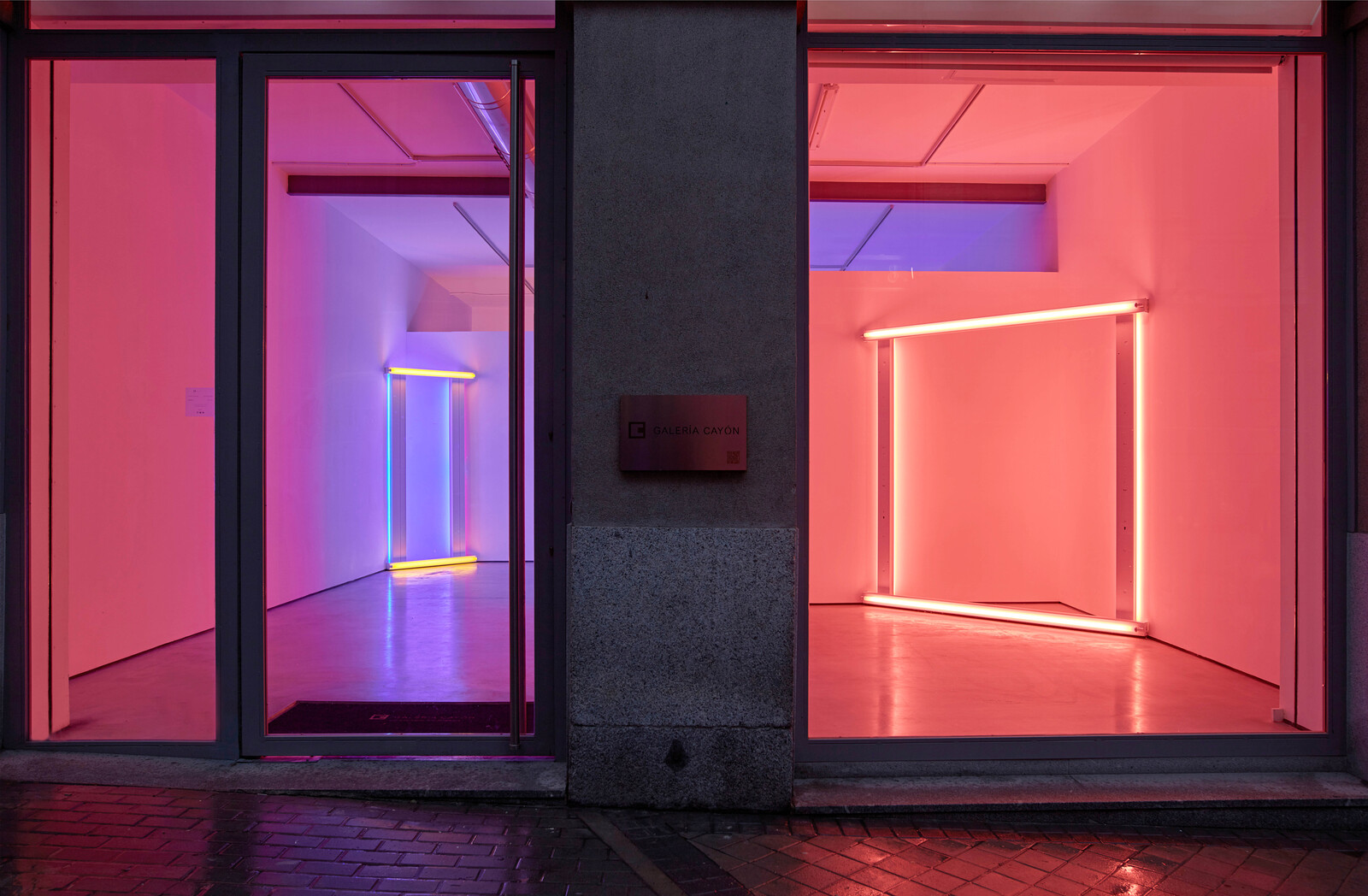Dedications to Artists
Josef Albers, James Brooks, Alexander Calder, Dan Hill, Allen Jones, Piet Mondrian, Barnett Newman, Ad Reinhardt, Cy Twombly, DeWain Valentine
February 22–April 1, 2018
Calle Blanca de Navarra, 7
28010 Madrid
Spain
Hours: Monday–Friday 11:30am–7:30pm,
Saturday 11am–2pm
T +34 913 10 62 89
info@galeriacayon.com
Extended hours during ARCO week: Monday–Sunday, 11am–8:30pm
Galería Cayón is pleased to present, at its two locations in Madrid, the first exhibit by the North American artist Dan Flavin (Jamaica, New York, 1933–Riverhead, New York, 1996) devoted exclusively to the works he dedicated to some of the most important artists of the 20th century. This exhibit, which covers a span of 25 years, will include some of Flavin’s most notable works, dedicated to artists including Josef Albers, Alexander Calder, Piet Mondrian, Barnett Newman, Ad Reinhardt and Cy Twombly.
Flavin’s explorations culminated in what is considered his breakthrough work. Completed in 1963, the diagonal of May 25, 1963 (to Constantin Brâncusi) consists of a single fluorescent lamp installed diagonally on the wall, a tribute to Endless Column (1938) by the Romanian sculptor Constantin Brâncusi (1876–1957).
Following the creation of the diagonal of May 25, 1963 (to Constantin Brâncusi), Flavin produced a series of installations—or “situations”, as he would refer to them—of light and color that completely redefined their surrounding space. In this manner, architecture assumed a vital role, granting the frequently ignored or discarded corners of exhibit spaces essential value.
the diagonal of May 25, 1963 (to Constantin Brâncusi) was not only the high point of a search for formal minimalism; it initiated an intimate and lifelong dialogue between Flavin and a number of the major artists of the 20th century, some of whom were his contemporaries and even personal friends. These works reveal, more eloquently than any of Flavin’s other creations, how crucial color was to his practice. Having willfully reduced the role of the supporting material to its minimum, he would now rely entirely on the color and title of each piece to sustain his dialogues.
Furthermore, these sculptures, comprised of fluorescent lamps and devoted to some thirty artists, establish a clear relationship between the colors employed by this North American artist and those that characterize the compositions to which they refer. The brilliance of Flavin’s white lamps, for example, suggests the delicacy found in the works of Sol LeWitt and Cy Twombly, while the opacity of his fluorescent fixtures echoes the monumental near-monochromatic installations of Ad Reinhardt. Flavin’s combinations of red, blue, and yellow remind us, unerringly, of Piet Mondrian and Alexander “Sandy” Calder, as well as Barnett Newman’s iconic iterations of Who’s Afraid of Red, Yellow and Blue.
This exhibit, which will open in Galería Cayón’s two locations in Madrid coinciding with ARCOmadrid 2018, presents sixteen works conceived as corner, diagonal, horizontal, and vertical wall installations. The selection of these works was not guided by formal concerns or spatial considerations. Instead, it was designed to reflect, rigorously, Flavin’s tributes to artists of his own century.
Work by the artist is included in museum collections worldwide, including The Museum of Modern Art, New York; DIA Art Foundation, New York; the Solomon R. Guggenheim Museum, New York; Museo Reina Sofia, Madrid and Tate Modern, London. Between 2004 and 2007, the exhibit Dan Flavin: A Retrospective, organized by DIA in association with the National Gallery of Art, Washington, D.C., traveled to the Museum of Contemporary Art, Chicago; the Museum of Modern Art, Fort Worth, Texas; the Hayward Gallery, London; the Musée d’Art Moderne de la Ville de Paris; the Bayerische Staatsgemäldesammlungen, Pinakothek der Moderne, Munich; and the Los Angeles County Museum of Art. In 1983, the Dan Flavin Art Institute opened as a permanent installation in Bridgehampton, New York.


